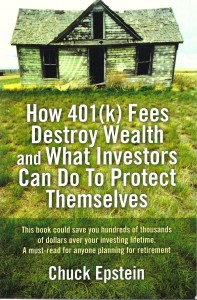As the mutual fund industry struggles to differentiate itself either through performance, products, strategies or fees, the U.S. Department of Labor has handed the industry a great opportunity to innovate through regulation.
 That’s a difficult concept for the financial services industry to accept, but regulation has its benefits.
That’s a difficult concept for the financial services industry to accept, but regulation has its benefits.
The Robber Barons recognized that at the turn of the century when they agreed that unfettered competition was wasteful and unprofitable. So the Robber Barons used regulation as a way to divvy up the railroad industry into strategic and geographical partnerships.
Fee wars are uncommon in the mutual fund industry, because the terrain is protected by revenue sharing and 12b-1 fees and investor apathy and inertia.
But fee wars do happen in younger, more innovative financial products, such as ETFs. This latest fee war between BlackRock and other low-cost ETF providers helps explain why ETFs continue to attract more new money than mutual funds.
Yet while the mutual fund industry does not have that same latitude as the Robber Barons did in 1900, some elements of the fund industry can use the new DOL fee and expense disclosure regulations, now packaged under the sexy title o f408(b)(2) and 404(a)(5), as a way to innovate.
These new regulation have been opposed by the fund and annuity industries for decades. That’s predictable and it only highlighted the gap between shareholder interests versus those of the industry. The size of that gap will only become more visible as more fee and expense data becomes available each quarter to shareholders, employers and other concerned observers, such as ERISA plaintiff attorneys and independent registered investment advisors (RIAs) who have adopted the fiduciary standard.
What the new DOL regulations will show is that many, perhaps millions, of 401(k) participants have been paying too much for too little, whether in the form of services received, scope of choices, or performance. As noted in my upcoming book, “How 401(k) Fees Destroy Wealth and What Investors Can Do About It,” numerous academic and DOL studies have demonstrated how fees destroy retirement wealth. In one study, fees eroded returns by as much a 28% over a 30-year investment period.
That is lost money which a 401(k) participant, who was also someone’s employee, can never recover. Worse, they trusted their employer to find and oversee their 401(k) plan to find the best, low-cost investments. When fee losses approach the 28% level, that employer has failed in their fiduciary role. Now, thanks to the new DOL regulations, employers and their 401(k) plan administrators and others involved in the plan can finally be held accountable.
Regulation as Innovation
While the impact of the new DOL regulations is still emerging, the new reality is that some intrepid employers, 401(k) plan administrators and RIAs can use the new disclosure regulations to differentiate themselves from the pack. Transparency and financial education can be used to explain the new DOL regulations and how those fees have been managed for the benefit of participants.
But that can obviously only be done when the facts make that case. When they do, it presents a new marketing opportunity for human resources departments and RIAs to point out the hard-dollar benefits of good plan administration and how the fiduciary duty has a real impact on an investor’s total portfolio over their entire investing lifetime.
Currently, investors pay about $164 minion in fees daily to the financial services industry. That is a huge amount that investors have no idea they are paying, nor what they even get in exchange for these huge payments. Intrepid RIAs and employers who have good answers to what they return in exchange for these fees can create solid, new marketing programs aimed at their investors and employees. Those who just take the fees and provide nothing in return should suffer the consequences.
Yet while the DOL regulations provide great opportunities, the fund industry’s more normal state is inertia. That lack of forward energy largely stems from the $9.5 billion in revenue sharing and 12b-1 fees spent annually. This money does not benefit shareholders, yet it supports an entire superstructure of internal and external salespeople who add noting to an investor’s bottom-line investment returns. While the new DOL fee and expense regulations will not immediately change the revenue sharing and sale-centric fund sales culture, they will highlight that alternatives are available and that much of the fund and annuity industry is free-riding on the backs of unsuspecting investors










